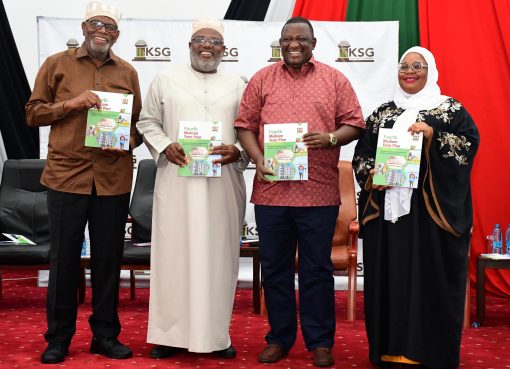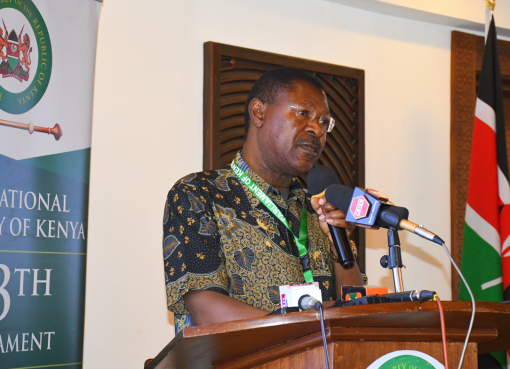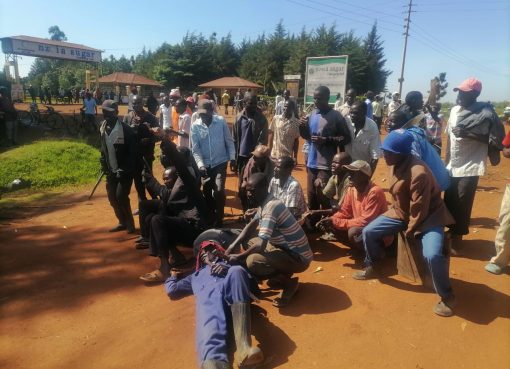The National Syndemic Diseases Control Council (NSDCC) has launched a nationwide campaign towards ending the “triple threat” of early pregnancies, new HIV infections and sexual and gender based violence cases among adolescents and young people.
A syndemic or synergistic epidemic is the aggregation of two or more concurrent or sequential epidemics or disease clusters in a population with biological interactions, which exacerbate the prognosis and burden of disease.
NSDCC, the successor to the National Aids Control Council (NACC) is mandated to lead, mobilize resources and coordinate the implementation of the HIV response and covers more diseases such as malaria, TB, leprosy and lung diseases.
The renewed campaign seeks to build momentum for scaling-up prevention of gender-based violence, reducing early and unintended pregnancies among adolescent girls and HIV prevention programmes for youth.
NSDCC Chief Executive Officer (CEO) Dr. Ruth Laibon Masha has called for the scaling up of the fight against the triple threat noting that these challenges have persistently “compromised our social fabric and contributed to significant social and economic inequalities.”
Dr. Masha said the countrywide campaign would address these social menaces and improve the health of young girls.
She said the NSDCC and National Council for Population and Development (NCPD) have partnered with National Government Administration Officers (NGAO), other government entities, and implementing partners to develop and implement strategies for eliminating the triple threat; sexual gender-based violence, pregnancies and HIV among adolescents and young people.
Dr. Masha said this during a sensitization meeting for community leaders under the theme ‘ending the triple threat among adolescents’ at the Kwale Cultural Centre.
She said adolescent pregnancies remained high in the country, with an average of 25 percent in the last 6 years.
She revealed that in 2021, Kwale County recorded 6,640 teenage pregnancies, a significant decline from 12,480 in 2018. In the same year, more (173) younger children (10-14 years) became mothers in Kwale County compared to the previous year (2020), where 99 pregnancies were recorded.
She also took the opportunity to highlight another significant challenge that threatens the gains made in the HIV response.
“While the county recorded almost a 3-fold decrease in new HIV infections across all ages, from 1,208 in 2016 to 386 in 2021 (about 68 per cent of new HIV infections), the county still lags in reaching the target of reducing new HIV infections by 75 per cent,” she said.
She added, “While new HIV infections have decreased among adolescents (10-19 years) in the last six years, from 300 in 2016 to 55 in 2021, we still need to strive towards fewer or zero new HIV infections.”
Dr. Masha said 21 adolescents died from AIDS-related complications in Kwale and that during the same year, the county had almost doubled the number of HIV-related mortalities.
Acting Director of Medical Services and Head of Directorate Preventive and Promotive health Dr. Andrew Mulwa, noted that across the country, adolescent pregnancies continued to deny young girls their childhood rights, including their right to education and protection.
“Nationally, statistics show a depressing trend. Between 2016 and 2021, the Ministry of Health recorded 2,087,020 adolescents’ aged 10-19 attending antenatal clinics across the country. Among these were 128,223 girls aged 10-14,” said Dr. Mulwa.
“Between 2016 and 2021, the country recorded a total of 32,027 new cases of HIV and this trend is nothing to be proud of because these are not just numbers but the lives of girls which are disrupted when schooling and talent acquisition is critical,” he added.
The medic said more needed to be done in enforcing the Sexual Offenses Act, Children’s Act, and Marriage Act to protect adolescent girls from abuse, sexual harassment, and exploitation.
“This will ensure that perpetrators of teenage pregnancies and gender-based violence face the full force of the law,” he said.
Kwale Governor Fatuma Achani said the campaign targeted over 1000 people from all the five sub counties.
She said statistics indicated that 3.2 percent of Kwale residents were infected with the virus with the most prevalent cases being teenagers.
“We will continue to partner with stakeholders to ensure that we prosper socially, economically and politically for a better Kwale,” she said.
By Hussein Abdullahi





